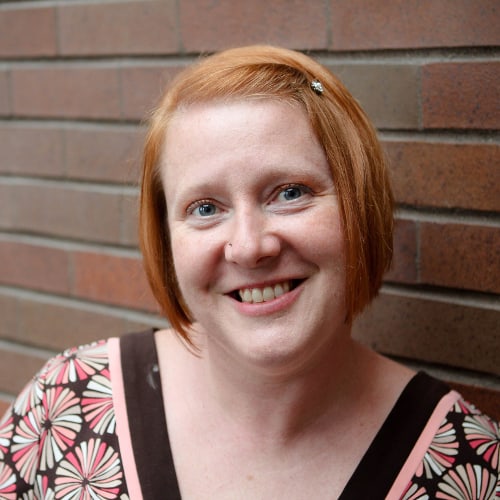What Growth, Innovation and Collaborative Mindsets look like for Students and Teachers

If you are reading this, you’ve very likely lined up your stuffed animals in alphabetical rows and taught them how to write, or add, or all about history. Better yet, you may have commandeered the entire basement setting up your ideal school. If you fall into this category, you may have an inordinate love of new notebooks and dry erase boards—just like me. Many of us become teachers because we love learning, in addition to teaching. It is often far into a teacher preparation program before actual students, with real needs, talents, and expectations, are placed before you.
Suddenly, you are gazing at a classroom filled with all types of students—some begrudgingly there, some anxious, probably quite a few social butterflies, maybe someone who is painfully shy, a fair number of perfectionists, maybe some ENL students (English as a New Language), and there are those with IEPs or 504s. Suffice it to say, this diverse group might not learn just because you stand up front and “teach” like you did when your were little.
Truth be told, standing up there and “teaching” is outmoded and ineffective. As a 21st century teacher, your job is to rally the disjointed group to prepare them for a future that doesn’t exist yet. With this in mind, teachers must tap into important mindsets to be successful in creating powerful, personalized learning experiences.
Growth mindset
A growth mindset is one which embraces the notion that talents, intelligence, and potential can be developed through practice and learning, frequently with good mentoring. Carol Dweck, author of Mindset: The New Psychology of Success, teaches us that students who believe they are continually evolving are much more successful than those who simply believe things like “I’ll never be good at math” or “I’ve never been a good reader.” A growth mindset is crucial for teachers because we must believe that our students are capable of moving forward, perhaps at different paces, perhaps demonstrated in a variety of ways, but still growing.
In order to instill this important mindset in students, we must demonstrate that we believe in their potential to grow and change. Teachers must intentionally keep themselves in check in this area. It is easy to slip into a belief about a student that is based on past performance, not the potential sitting in front of you. In this talk, Dweck explains an experiment she conducted following students who entered 7th grade with the same math abilities over the course of two years. What she found is that those who demonstrated a growth mindset, did, indeed grow; conversely, if the student had a fixed mindset, the student didn’t just stay the same, but actually fell behind.
Clearly, this has important implications for teachers. First, we must model a growth mindset in the way we address tasks and students. Today, as I explained this concept to my 8th grade students, I described that growth mindset means that you have no idea what you’ll learn or be able to do next because it is subject change. Your talent or ability has little to do with your success, but rather persistence and practice will push you to successes you can’t even imagine yet. Sure, there were a few skeptical faces in the crowd, but there were also some students who might not usually be inspired about their ELA class, but have found hope in their potential. Finally, we must allow students ample opportunity to fail and grow, allowing for revisions, retakes, second and third submissions, encouraging students to reach new heights as teachers act as mentors.
Innovation mindset
An innovation mindset requires commitment. That might sound counterintuitive at first; after all, isn’t innovation simply the introduction of a new idea or way of doing things? Yes, but, innovation doesn’t happen quickly because the new idea needs time to grow and develop while processes need to evolve as we pursue alternate approaches. In the classroom, this mindset is critical because the exponential growth of technology impacts every aspect of our society. We must teach students to be innovators—people who solve the problems that arise as the world changes. This creates a classroom of multiple thinkers and problem solvers, versus a class seeking one-size-fits all solutions.
Teachers can model an innovation mindset through a willingness to take down walls between different content areas, ways of sharing material, and learning configurations. This means a wide variety of choice. Classes can become cross-curricular, flipped, or hybrids of online and face-to-face time. When teachers are willing to allow traditional expectations to fade away, students will reap the benefits of becoming contributors to their learning, not dumping grounds for what we want them to know.
Who amongst us hasn’t marveled at a unique solution a student proposed? I remember thinking once, “Only Austin could come up with that.” What did I mean? Only Austin—who was a self-proclaimed computer geek, addicted to Minecraft, and a prolific journaler—would propose that we study the characters in our book by creating a video game chronicling the character’s journey through a series of narrative clues. Did we all do that? Of course not. But Austin did, inspiring other students to take creative risks that come from innovating. Tom advises learners in his blog Developing an Innovation Mindset to “figure out what you’re passionate about and get to work reading, writing, visiting, and thinking about it with some smart people.”
Collaborative Mindset
Tom’s advice points to another mindset—a mindset for collaboration. The natural extension of “thinking about it with some smart people” is to work with those people in productive ways, namely collaboration. Our classrooms are an ideal venue for collaboration, but not if left to chance. Edutopia’s Rebecca Alber provides a spot on overview of how to scaffold this type of learning in Deeper Learning: A Collaborative Classroom is Key. She suggests that foundational skills must be overtly taught, and I agree. Additionally, the social nature of learning—particularly for teenagers—must be considered.
Not only must we think of the social nature of learning, but also the Digital Native view on connectivity and collaboration. Last year, I explored the benefits of what I called “social reading” by allowing students to read the same novel in collaborative groups and then share a project of their own creation with the class. What I found really surprised me. My students were more eager to read, something most people think of a as a private act, when they were collaborating to develop meaning. Teachers must recognize that gone are the days of “sage on the stage” because with technology, the world is the stage and the actors can be on different continents.
Classrooms should be organic, living, breathing entities, not necessarily bound by four walls. Successful 21st century educators not only embrace the growth, innovative, and collaborative mindsets, but also instill those habits and dispositions in their students. Teaching and learning can be much improved if the “trifecta of mindsets” drive your decisions, not simply content.
- Why Investing in Learning Mindsets Matters
- Teachers Model Growth Mindsets During Twitter Ed Chat
- 10 Ways to Foster An Entrepreneurial Mindset
Stay in-the-know with all things EdTech and innovations in learning by signing up to receive the weekly Smart Update.







Angela Stockman
Amber, this is such an important post. My concern is that all of the hype around growth mindset and innovation and collaboration works to distill and generalize these rich and very complex ideas. Do you find that happening at all in the trenches? Something that excites me though: more talk about these sorts of approaches rather than rigid hyperalignment to the CCLS. You know I support the standards, but how we interpret and leverage them is everything. Can we do so while inspiring a growth mindset and innovation and collaboration? Sure can. Time to see how those standards can flex. Talk about a shift in mindset! Thanks for inviting me to stop by. A wonderful post that has me thinking, as always....